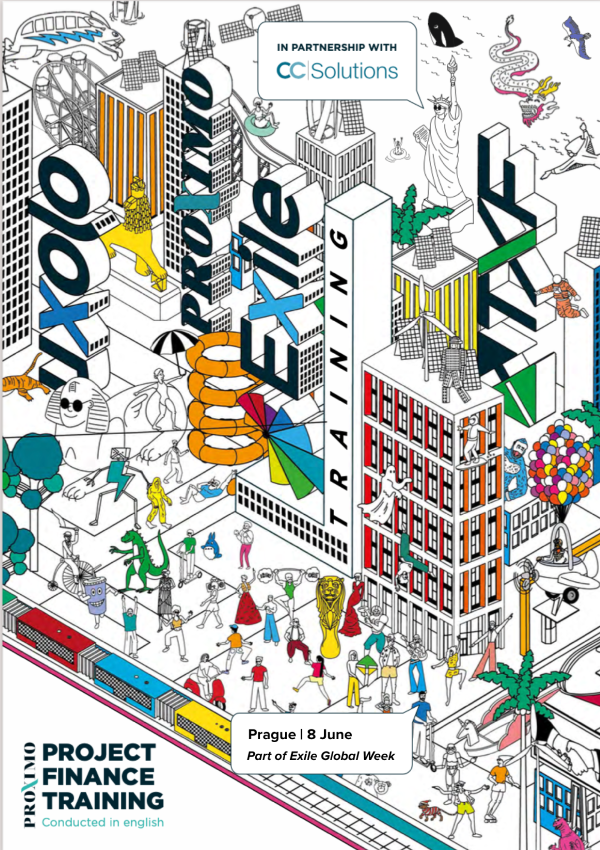Tierra Bonita: A demonstration in PTCs
Tierra Bonita is one of the first US solar deals to include a production tax credit (PTC) transfer. So how do the benefits demonstrated by the deal compare with the established investment tax credit?

Ashtrom Renewable Energy’s project financing for its 400MW Tierra Bonita solar project is among the first US solar financings to include a tax credit transfer. Employing a strategy made possible by the Inflation Reduction Act (IRA), the production tax credits (PTCs) earned by the project will simply be sold under a long-term agreement without any formal tax equity partnership.
The $435 million Tierra Bonita project will be located in Pecos County, Texas and is Ashtrom Renewable Energy’s first large-scale solar project in the US. Structured via SPV Greasewood II LLC, the financing for the project is made up of $303.8 million of senior debt, including a $270.4 million term loan and a $33.4 million letter of credit (L/C) facility. The term loan will fund construction and transaction costs.
The L/C facility will be used to issue L/Cs in relation to the power purchase agreement (PPA), the interconnection agreement, and the six month debt service reserve requirement. Lenders on the transaction include ING, BayernLB, Rabobank, Societe Generale, and BHI. Both facilities have a tenor of construction plus five years, meaning that the debt has an effective tenor of around six years.
The financing also includes a ten-year tax credit transfer agreement (TCTA) to sell the PTCs earned by the project. The transfer deal is one of the first deals of its kind and has an estimated value of $300 million. The PTCs will be sold to a life insurance company that is a client of Stonehenge Capital, which often acts as a syndicator for tax equity investments, or, as in this case, brokers the sale of tax credits.
The transfer deal was largely arranged through Stonehenge Capital rather than directly with the life insurance company. The company has engaged in other tax investments in the US, but has previously avoided those involving renewables, as it did not wish to enter into a tax equity partnership. The buyer is, however, confident of its tax capacity for the next ten years and is willing to commit to purchasing tax credits over that period.
The solar farm has a 20-year PPA with CPS Energy for around 60% of the energy produced by the project, while the remaining 40% will be sold on a merchant basis. Advisers to Ashtrom Renewable Energy include Morgan Lewis (legal) and Marathon Capital (financial). Allen & Overy is legal adviser to Stonehenge Capital. Mortenson is the EPC contractor. The solar farm, whose original developer was OnPeak Power, is expected to be operational by the fourth quarter of 2024.
IRA changes tax equity investment plan
Development of the Tierra Bonita project had begun before the IRA was signed into law in August 2022, with the initial intention being to use an investment tax credit (ITC) partnership flip structure to finance the project alongside back-levered senior debt. Prior to the IRA, tax credits were not transferable and could only be used by an investor as part of a tax equity partnership. Additionally, solar projects were only eligible for ITCs. The IRA has made tax credits transferable and allows solar projects to earn PTCs.
The passage of the IRA therefore created an opportunity to finance the project using PTCs, where previously only ITCs were available. The economics of the project work better with the PTC than the ITC, largely as a consequence of its location. In general terms, the south-western US has high levels of solar irradiation, relatively flat terrain, and a less unionised labour force than some other areas of the US. Projects built in areas like Texas will, consequently, often benefit from using the PTC, which is based on energy production, whereas the ITC is based on upfront capital cost.
Conversely, projects in regions such as the north-east will usually be more suited to the ITC, due to lower revenues and higher costs resulting from lower solar irradiation, more mountainous terrain, and a more unionised labour market. According to some market sources, the theoretical return on a project in Texas before tax equity and leverage could be as much as 200bp better if using the PTC rather than the ITC.
These principles do not apply in all cases, but the Tierra Bonita project is definitely better suited to the PTC. This becomes further evident in light of the fact that the PTC was still commercially preferable to the ITC even when considering the bonus tax credits available through the ITC, but not the PTC. Both PTC and ITC projects qualify for a 10% bonus if located in an energy community. But only ITC projects can receive a 10% bonus tax credit that applies to small-scale solar and wind projects in low-income communities, or a 20% bonus tax credit for projects that form part of a qualified low-income residential building project or a low-income economic benefit project.
Many areas of Texas allow projects to qualify for these additional tax credits. However, even with the supplementary tax credits that Tierra Bonita would have earned via the ITC, using the PTC allowed the project to generate a better return. As a result, the decision was made to switch from the ITC to the PTC for the tax equity component of the financing.
A PTC tax equity partnership would have offered the best possible return for the sponsor. Tax equity partnerships typically offer returns that are higher than those of transfer deals, as partnerships allow for the monetisation of depreciation, while transfer deals do not. Additionally, in a transfer deal, tax credits must be sold at a discount in order to make the purchase worthwhile for the buyer.
While the option of a partnership was explored, it was eventually abandoned in favour of a transfer. There is a small pool of PTC tax equity investors, with most transactions involving large banks such as Goldman Sachs, Wells Fargo, Bank of America, and JP Morgan. These investors do not typically enter into tax equity partnerships unless the sponsor has a track record of renewables development in the US. Tierra Bonita is Ashtrom Renewable Energy’s first major US project (though it is OnPeak's second), making it unlikely that the usual investors in PTC tax equity partnerships would back the project.
Due to the fact that there is no tax equity partnership, there is no need for back leverage and, as a result, the debt is secured at the project level. The original plan was to create two tranches of senior debt, with one tranche sized according to the revenues from the PPA and merchant energy sales and the other sized in relation to the PAYGO payments from the PTC sales. Each tranche would have had its own lender group.
This became too complicated in terms of the collateral share and cross default between the two tranches and the decision was made to combine the two tranches. Doing so increased the amount of debt required from each bank, necessitating the addition of a further lender to what was a four-strong lender group. Debt sizing is based on DSCRs of 1.3x for the PPA and PAYGO revenues and 2.0x for the merchant revenues.
The Proximo perspective
Early transfer deals such as the Tierra Bonita financing are raising pertinent questions for the US renewables market about when tax equity partnerships deliver value. Investors in transfer deals are not necessarily in direct competition with those that invest in tax equity partnerships. For example, JP Morgan – a major investor in PTC tax equity partnerships – has recently concluded a $191 million ITC and PTC transfer deal with Arevon Energy for the Vikings Energy solar-plus-storage project.
In addition, transfer deals are sometimes pursued when a tax equity partnership may prove challenging, as with the Tierra Bonita financing. Nevertheless, investors that have had a reliable pipeline of business through partnerships might find that sponsors see transfer deals as a better option in some circumstances. Partnership deals are only really worthwhile for hyper-competitive projects that must eke out every last basis point of sponsor returns, as partnerships generally deliver better returns for the sponsor than transfers.
In most other respects, transfer deals have obvious advantages over partnerships. They are legally simpler – an adviser on the Tierra Bonita financing notes that a typical tax equity partnership requires around 200 pages of documentation, where a transfer deal presently needs around 80. In a transfer deal, sponsors are also freed from any obligation to attain consents from a tax equity partner.
PTC transfer deals insulate the tax credit buyer entirely from performance risk and curtailment risk, as the buyer only purchases PTCs when they are earned, with no capital contributed upfront. By contrast, only 25% of the tax equity investment in a PTC partnership structure can take the form of PAYGO payments, with the majority of the investment provided at COD. This does expose PTC tax equity partnership investors to some risk from curtailment or operational issues that prevent the project from earning PTCs. The avoidance of these risks makes PTC transfer deals more viable investments for some investors than tax equity partnerships, expanding the selection of tax investors beyond the current small group of banks and giving sponsors a wider group of investors from which to choose.
Transfer deals do present risks for lenders that are different from financings with tax equity partnerships. For the Tierra Bonita deal, the lender group would have had to take a view on the bankability of the PAYGO revenue stream. However, from a revenue perspective, a TCTA is not dissimilar to a PPA, with which project finance banks have considerable experience. The banks on the deal had to provide more debt than would have been the case had a tax equity partnership been used. The lender group is also exposed to curtailment and performance risk from the PPA, merchant, and PAYGO revenues.
Curtailment risk is a particular issue in the area managed by ERCOT – which is responsible for transmission in most of Texas – and will affect projects like Tierra Bonita. But the financing is solely comprised of project-level debt, giving lenders security over the entire project and not just the revenues due to the sponsor, as in a back-levered deal. This additional security and lenders’ experience with curtailment risk should enable them to become comfortable with transfer deals, as the Tierra Bonita transaction demonstrates.
With banks willing to lend to projects using tax credit transfer deals, there is much to recommend transfers to sponsors in terms of convenience, flexibility, and the comparative ease of attracting a tax credit buyer. Perhaps most intriguingly, should interest rates fall from their current elevated position, project-level debt may become cheap enough relative to tax equity to produce sponsor returns that are in a similar ballpark to those available from tax equity partnerships. Should transfer deals reach this level of competitiveness, it is difficult to see why old-fashioned tax equity partnerships would remain appealing to most sponsors.
Tierra Bonita
- Financial close: October 2023
- Location: Texas, USA
- Sponsor: Ashtrom Renewable Energy
- SPV: Greasewood II LLC
- Description: Project financing for a 400MW solar project and one of the first PTC transfer deals
- Project Cost: $435 million
- Debt: $303.8 million
- Tax Credit Transfer Agreement: Ten-year contract for the sale of PTCs with an estimated value of $300 million
- Lenders: ING, BayernLB, Rabobank, Societe Generale, and BHI
- Developer: OnPeak Power
- Financial adviser: Marathon Capital
- Sponsor’s legal adviser: Morgan Lewis
- EPC contractor: Mortenson
- Offtaker: CPS Energy





